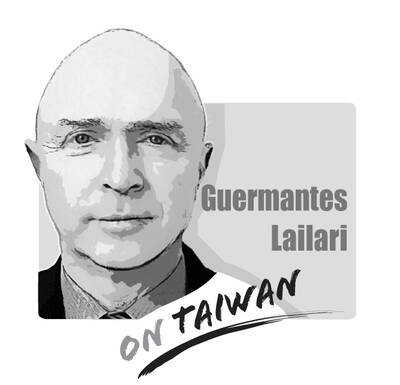The relocation of Shilin Night Market, which has been postponed for years will finally commence at the end of this year. Most of the food stalls will be moved to an underground section at a new location. Many people are worried that the new Shilin Night Market will end up just like the Jiancheng Circle and the underground mall at Longshan Temple MRT Station, becoming the latest guinea pig of the two “night market killers,” Taipei Mayor Hau Lung-bin (郝龍斌) and his predecessor, President Ma Ying-jeou (馬英九).
Moving the food stalls to an underground location is just part of the issue. The real pity is that the delays in reconstruction and the lack of well-thought-through development plans for the market and surrounding areas show that the Ma and Hau city governments have never understood the market’s key role, or had any long-term development plans to start with.
According to a survey by the Tourism Bureau, 5.6 million people visited Taiwan last year and 77 percent of these people listed “night markets” as places of major interest, while Taipei 101, the National Palace Museum and Sun Moon Lake came in at second, third and fourth places respectively. This shows how important night markets are to Taiwan’s tourism industry.
Of all the tourists who visited night markets, 49 percent listed Shilin Night Market as their first choice. This means that last year, the market had more than 2.1 million tourists visit.
Viewed in this light, the market is not only the cradle of Taiwanese food and traditional snacks, it could also be called one of Taiwan’s national gateways.
It could be even more important than places like Taipei 101, the National Palace Museum or Sun Moon Lake.
Shilin Night Market forms part of Taiwan’s international image and is crucial to both the promotion of Taiwanese culture and food, and the development of the tourism sector.
It is difficult not to feel anger over how the city government has failed to care for this gem when one sees the disorganized and ineffective way that it has dealt with Shilin Night Market.
This has included taking a decade to complete the reconstruction and changing construction companies three times, with work stopping and restarting four times.
Then there is the lack of parking spaces for tour buses around the market — people and cars have to fight for space outside the MRT station, the street layout of the market is chaotic and illogical, and the underground area at the new site has ventilation and drainage problems, while stall spaces are not large enough.
What is even more important is that those in power do not care about our national treasures.
All they do is engage in empty talk about how Taipei is the capital of gourmet food. They are slow to plan developments and take action, and unable to base their plans and actions on the business opportunities and amount of tourism that Shilin Night Market attracts from both local and foreign visitors.
The city government’s overall plan for the streets of Shilin, former president Chiang Kai-shek’s (蔣介石) official residence in Shilin, the National Palace Museum and the soon-to-be-constructed Taipei Performing Arts Center, and even the way it fails to effectively use the spaces of Taipei and its cultural resources, are all things that should receive serious consideration.
Pasuya Yao is a Democratic Progressive Party candidate in the January legislative elections for the No. 2 district of Taipei City.
TRANSLATED BY DREW CAMERON
As former president Ma Ying-jeou (馬英九) concludes his fourth visit to China since leaving office, Taiwan finds itself once again trapped in a familiar cycle of political theater. The Democratic Progressive Party (DPP) has criticized Ma’s participation in the Straits Forum as “dancing with Beijing,” while the Chinese Nationalist Party (KMT) defends it as an act of constitutional diplomacy. Both sides miss a crucial point: The real question is not whether Ma’s visit helps or hurts Taiwan — it is why Taiwan lacks a sophisticated, multi-track approach to one of the most complex geopolitical relationships in the world. The disagreement reduces Taiwan’s

A foreign colleague of mine asked me recently, “What is a safe distance from potential People’s Liberation Army (PLA) Rocket Force’s (PLARF) Taiwan targets?” This article will answer this question and help people living in Taiwan have a deeper understanding of the threat. Why is it important to understand PLA/PLARF targeting strategy? According to RAND analysis, the PLA’s “systems destruction warfare” focuses on crippling an adversary’s operational system by targeting its networks, especially leadership, command and control (C2) nodes, sensors, and information hubs. Admiral Samuel Paparo, commander of US Indo-Pacific Command, noted in his 15 May 2025 Sedona Forum keynote speech that, as
Former president Ma Ying-jeou (馬英九) is visiting China, where he is addressed in a few ways, but never as a former president. On Sunday, he attended the Straits Forum in Xiamen, not as a former president of Taiwan, but as a former Chinese Nationalist Party (KMT) chairman. There, he met with Chinese People’s Political Consultative Conference Chairman Wang Huning (王滬寧). Presumably, Wang at least would have been aware that Ma had once been president, and yet he did not mention that fact, referring to him only as “Mr Ma Ying-jeou.” Perhaps the apparent oversight was not intended to convey a lack of
Chinese Nationalist Party (KMT) Chairman Eric Chu (朱立倫) last week announced that the KMT was launching “Operation Patriot” in response to an unprecedented massive campaign to recall 31 KMT legislators. However, his action has also raised questions and doubts: Are these so-called “patriots” pledging allegiance to the country or to the party? While all KMT-proposed campaigns to recall Democratic Progressive Party (DPP) lawmakers have failed, and a growing number of local KMT chapter personnel have been indicted for allegedly forging petition signatures, media reports said that at least 26 recall motions against KMT legislators have passed the second signature threshold